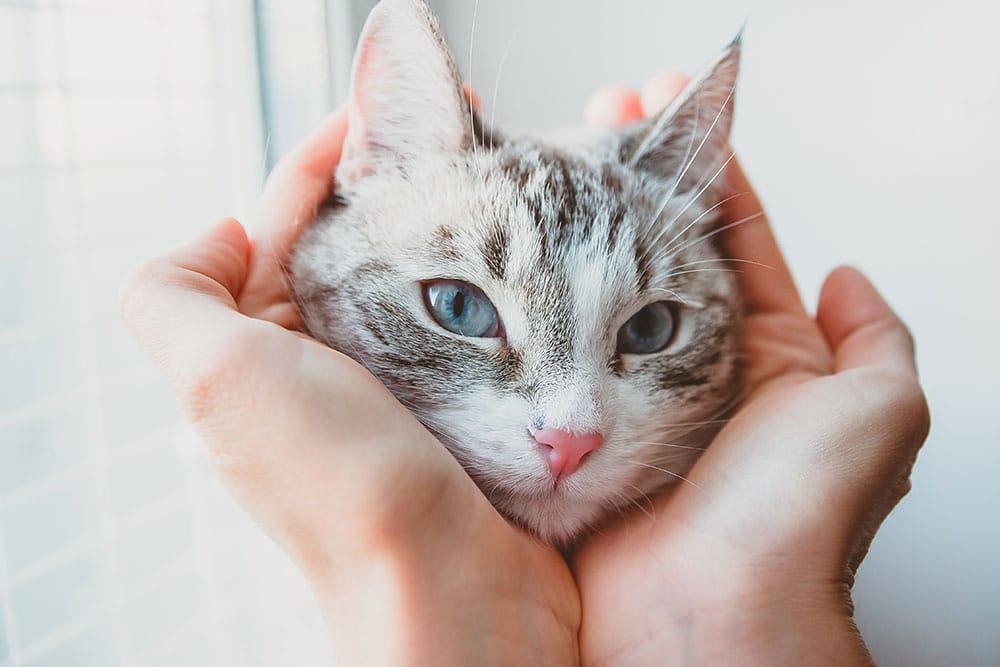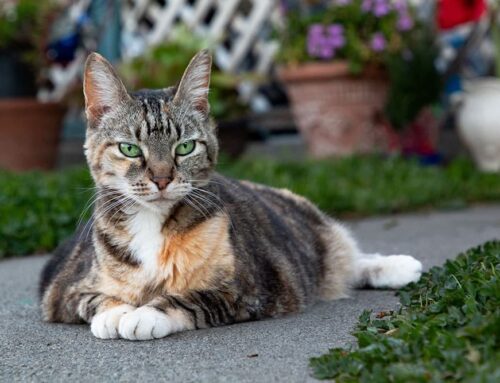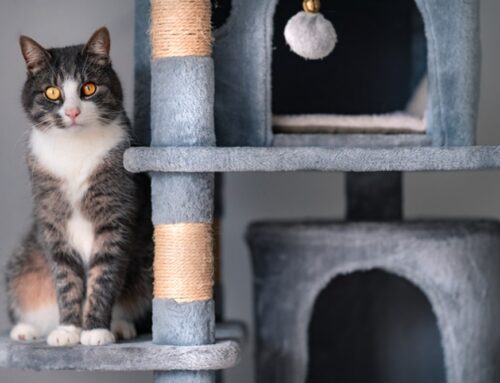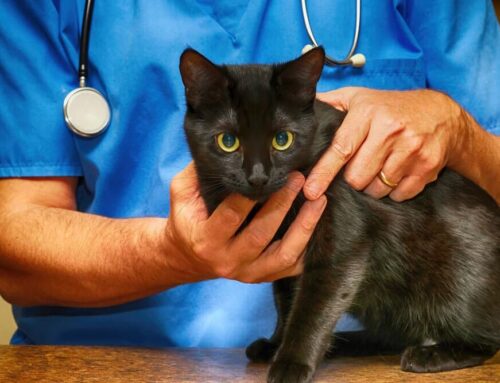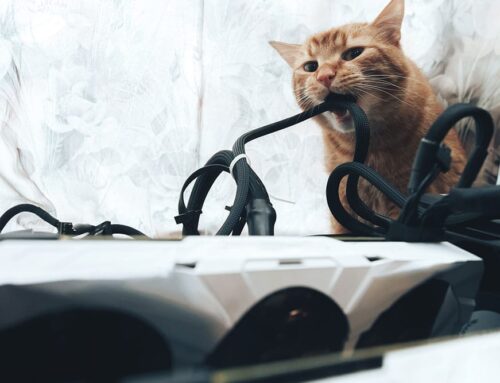Turning Fear Into Trust: The Power of Cooperative Care Training
If your cat hides at the first sight of the carrier or stiffens during a veterinary visit, you’re not alone. Many cats react this way out of fear, not stubbornness. Cooperative care provides a kinder, more effective alternative- one built on trust, patience, and understanding.
Trips to the veterinarian or routine handling at home don’t have to be stressful. Cooperative care training helps cats feel safe and in control during grooming, exams, and medical procedures. Through small, positive steps, cats learn that handling can be calm and predictable. The result is less stress for them and more confidence for you.
At Just Cats Clinic, an AAHA-accredited, Cat Friendly Practice in Reston, VA, every aspect of our environment is designed to put cats at ease. Our team uses gentle handling and Fear Free–informed techniques to build trust from the moment your cat arrives. We also teach pet parents how to continue that progress at home, turning what used to be a struggle into a shared success.
What Cooperative Care Means for Feline Patients
Cooperative care is a gentle training approach that helps cats participate willingly in their own care. Rather than relying on restraint, it respects feline communication and rewards calm behavior.
At its heart, cooperative care for cats is about giving your cat a voice. When a cat is allowed to pause, shift position, or step onto a mat to indicate readiness, their sense of control grows- and fear begins to fade. Progress is built through positive reinforcement for good cat behavior: small, repeatable steps followed by immediate rewards.
This approach is especially helpful for cats who need frequent checkups or treatments. For older cats or those with chronic illness coming in for regular preventive exams and care, cooperative handling helps ensure accurate exams, smoother treatments, and more comfortable care at home.
Why This Training Matters
Less stress during veterinary visits. Trauma from vet visits is common- but it’s preventable. Cats who learn to station, accept touch, or allow gentle handling show fewer signs of fear. They breathe easier, their heart rates stay steadier, and their exams are more accurate.
A safer experience for everyone. Predictable handling reduces the need for restraint and lowers the risk of defensive behavior. That means safer nail trims, medication administration, and bandage care for both pets and their people.
A stronger bond. Cats who trust their caregivers are more relaxed and affectionate. This trust carries over to new situations, including urgent cat care, where calm cooperation can make a meaningful difference. Evidence-based strategies for making veterinary visits less stressful and understanding that your cat’s vet visit begins at home support this transformation.
Recognizing Feline Stress Signals
Understanding your cat’s body language is the first step toward reducing fear. Early stress signals- like flicking tails, flattened ears, wide pupils, or crouching- show when it’s time to pause or simplify a session. Learning these cues through cat body language helps you respond with compassion instead of frustration.
Stress can also come from the environment itself. Common feline life stressors include changes in routine, loud noises, or new scents. Reducing these triggers helps your cat feel safe enough to learn.
At our AAHA-accredited, Cat-Friendly facility, we’ve designed every space with feline comfort in mind- from quiet exam rooms to elevated resting spots and calming pheromones that ease tension during visits.
Getting Started: Structure and Reinforcement
Set up the right space. Choose a quiet, familiar area and add soft bedding or pheromone sprays to help your cat relax.
Keep sessions short. Just a few minutes is often enough. End while your cat is still comfortable and engaged so training stays positive.
Reward generously. Offer immediate, high-value treats like lickable rewards. Consistency and timing matter more than session length.
Training cats works best when it’s fun and cooperative, not forced. If your cat feels anxious, scheduling an appointment with our team can help. We’ll develop a step-by-step plan and recommend techniques- or medications if needed- to reduce stress and build confidence.
Desensitizing to Common Procedures
Carrier Training
The carrier should mean comfort, not confinement. Keep it out in the open year-round with cozy bedding and treats inside. Helping cats learn to love their carriers takes time and patience, but short, positive practice trips can transform travel into a calm routine- helpful for both regular checkups and emergency visits.
Nail Trims and Paw Handling
Start small. Touch a paw for a second, reward, and stop. Gradually progress to holding a toe or showing the trimmer before clipping. Trimming claws shouldn’t feel like a battle- it’s about building trust over time. Use positive reinforcement and never punish hesitation.
Examination and Medication Practice
Practice light touches to areas commonly checked during exams- ears, mouth, chin, belly, and tail. Reward each step. For medication practice, introduce the process gradually with rewards and a calm tone. Applying eye medications can be tricky, so rehearsing beforehand helps make it easier when your cat really needs it.
Environmental Enrichment as a Training Multiplier
A relaxed cat learns faster. Creating a home environment rich with play, climbing spaces, and quiet retreats builds emotional balance and confidence. Keeping your indoor cat happy through predictable routines and foraging toys not only improves wellbeing but also makes cooperative care sessions more successful.
Preparedness for Urgent Situations
Cats trained with cooperative care adapt better in emergencies. They tolerate oxygen therapy, IV placement, or imaging with less fear, allowing treatment to start faster. Caregivers also feel more prepared- cat first aid classes teach essential skills that can make a difference until professional care is available.
Our team integrates gentle handling across every service- from preventive care and dentistry to surgery and pain management- so even urgent visits feel calmer and more controlled.
Practical Milestones to Aim For
- Entering the carrier calmly and exiting without resistance
- Stationing on a mat for a few seconds during gentle touch
- Allowing a brief mouth or paw check
- Accepting one nail trim calmly before ending the session
- Resting on their side for a few seconds with reinforcement and release
These goals aren’t about perfection- they’re about progress. Celebrate each success, no matter how small, and always end sessions on a positive note.
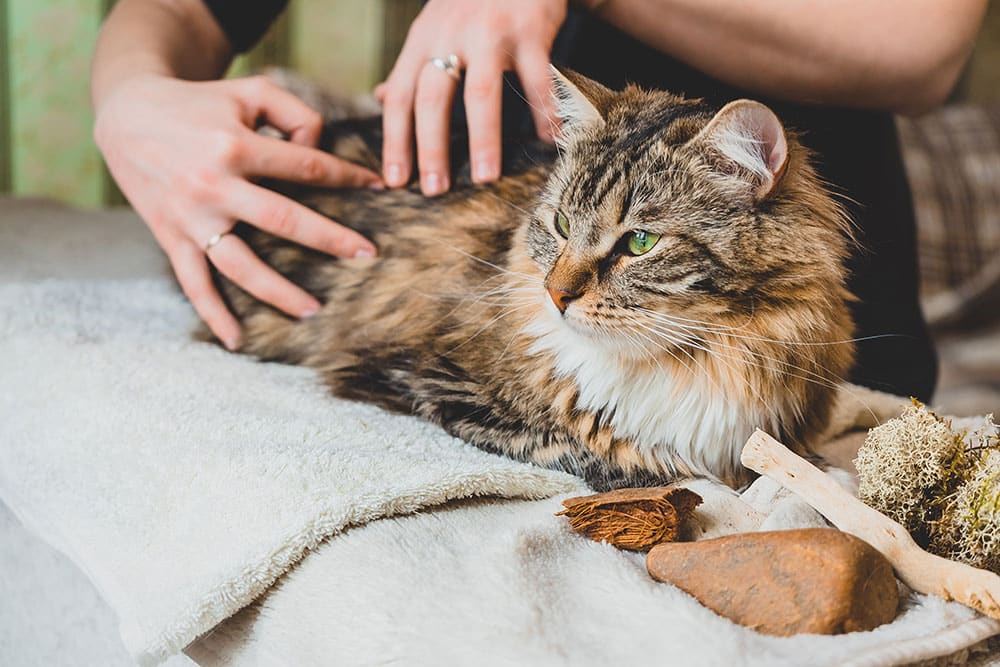
When to Seek Professional Support
If your cat remains fearful or defensive, or has medical issues that complicate handling, our veterinarians can help. We may integrate behavior modification, pain control, or mild anxiety relief. We also offer acupuncture and laser therapy to support relaxation and comfort during recovery and rehabilitation. Every plan is customized to meet your cat’s needs while keeping stress to a minimum.
A Low-Stress Roadmap to Better Medicine
Cooperative care training is more than a technique- it’s a partnership between you, your cat, and your veterinary team. By replacing fear with trust, it leads to better exams, safer procedures, and a stronger bond at home.
If your cat struggles with vet visits or handling, contact Just Cats Clinic to start a personalized plan. We’ll help you learn gentle, practical ways to make care a positive experience for your cat. In our AAHA-accredited, Cat Friendly environment, every visit is guided by empathy, expertise, and respect for the unique needs of cats and the people who love them.


